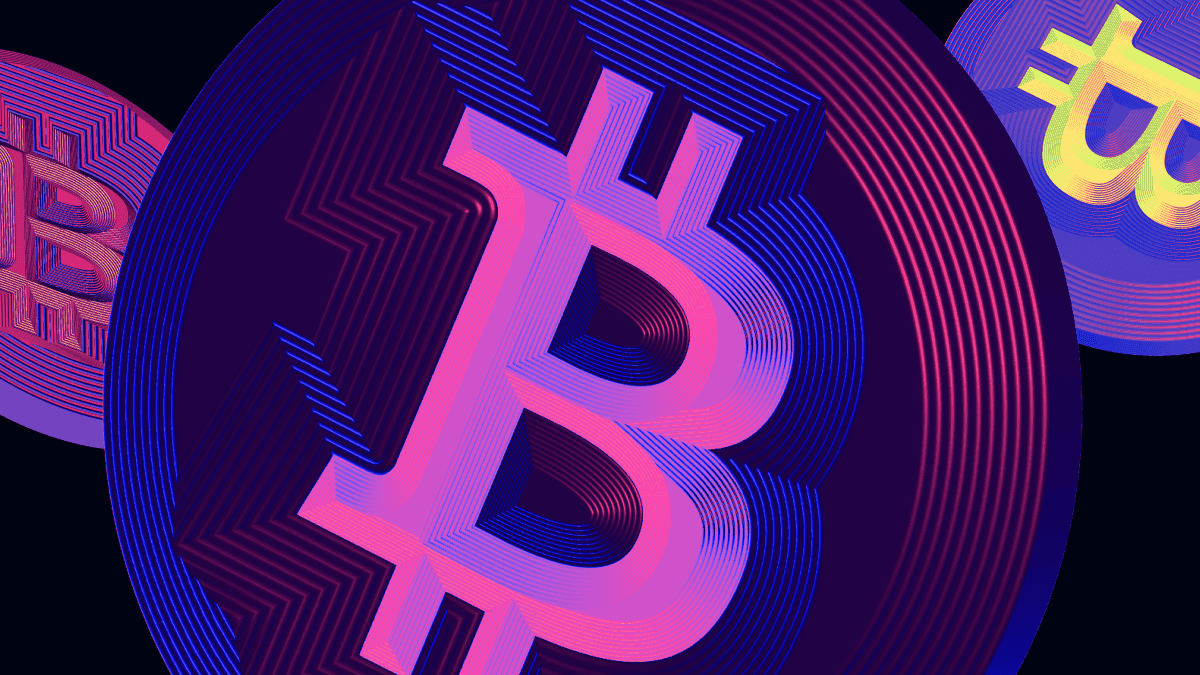What is Bitcoin

What Is Bitcoin, And How Does It Work
Nowadays, hundreds of different cryptocurrencies are fighting for the general public’s attention. They offer different advantages and opportunities for their owners. Some of them are pegged to fiat money or precious metals, and some promise extraordinary growth, but we all know how this era started. It all began with the creation of Bitcoin (BTC), the biggest and the most popular cryptocurrency known to people as of now. At the moment, you can buy and sell Bitcoin at any centralized (CEX) or decentralized (DEX) exchange. So how and when was it created, what is Bitcoin, what’s Bitcoin meaning, and how Bitcoin works? Let’s find out how this crypto managed to stay on top of the game in our newest article!
What is Bitcoin
Bitcoin (BTC) is the first digital currency, which was launched in 2009 by a person or a group of people named Satoshi Nakamoto. Bitcoin was created as an alternative to traditional payment systems. Basically, it works without any central control from banks or governments. However, Bitcoin does use a peer-to-peer system and cryptography. This means you can buy, sell and exchange BTC directly, with no intermediaries involved. Its creator, Satoshi Nakamoto, originally called it a “payment system with cryptographic proof instead of trust”. What is BTC? The same as Bitcoin. Bitcoins can have seven decimals, with one-thousandth of BTC known as a milli and one-hundred millionth known as a satoshi. Bitcoin (BTC) can be exchanged for fiat or any other cryptocurrency.
Since the day of its creation, Bitcoin’s price has changed dramatically. It literally went from zero to its All Time High (ATH) of $68 000 and is now traded at about $19 000 (at the moment of writing this article). The supply of Bitcoin is limited to 21M, which leads many people to expect its price to keep rising. At the moment, there are already over 19M coins in circulation.
What is the difference between Bitcoin and blockchain
What does Bitcoin mean? See, Bitcoin is both cryptocurrency and blockchain. So when we talk about the Bitcoin blockchain, we refer to a chain of blocks that include all the information about every transaction ever made within Bitcoin. How does Bitcoin work? Like a big book with the info with the copies distributed on different devices (nodes). Nodes are any computers that store the entire blockchain. This means that even if one (or more) of them is hacked, the others will still have a copy of the information. So when you send some BTC to anyone, it gets recorded and can’t be reversed.
While the idea of anyone being able to edit the blockchain can sound unsafe, this is what makes Bitcoin secure. To add another block to a blockchain, it must be verified by the majority of holders.
It is also important to understand how Bitcoin mining works. As we’ve established, Bitcoins run on a decentralized computer network. Mining is basically a process of creating new coins. In this case, a miner needs to validate a block by solving a difficult mathematical problem. The miner who does it get a reward. The only thing is, these problems are becoming increasingly more difficult. So the higher the computer power, the more chances to be the first you have.
Back in the early days, anyone could mine Bitcoin, even from their own laptops and without any additional video cards. However, the Bitcoin algorithm was programmed in a certain way, where the puzzles that need to be solved in order to validate a block get increasingly more difficult each time.
Who created Bitcoin, and when was Bitcoin created
The mysterious creator of Bitcoin is known to the public as Satoshi Nakamoto. No one knows who it really is. It can be one person or a group of people. However, everyone knows where did Bitcoin come from. Let’s see how did Bitcoin start. Nakamoto introduced the concept of the first cryptocurrency to the world on the 31st of October 2008. After that, it wasn’t until the 9th of January 2009, before the genesis block of Bitcoin was released. Nakamoto was active in the Bitcoin development until 2010, but then gave control over it to Gavin Andersen. It is believed that Nakamoto owns almost 1,1M Bitcoin, which would make him one of the richest people in the world at the time when BTC was at its ATH.
There are, of course, numerous theories about the real identity of Satoshi Nakamoto. Hal Finney, the person who received BTC in a transaction, was one of the early “suspects”. Dorian Nakamoto, a Japanese-American engineer from California, was also believed to be the creator (he also lived not far away from Finney). Craig Wright, an Australian academic, was even planning to sue the people who denied him being the inventor of Bitcoin. Many other candidates have appeared over the years. However, none of them were proven to be the actual Satoshi Nakamoto.
One of the most curious situations with Bitcoin happened in 2010. On the 22nd of May that year, a man named Laszlo Hanyecz bought two pizzas for 10 000 BTC. Pizzerias didn’t accept payments in Bitcoin back then, but Laszlo posted his offer on a website and 19-year-old Jeremy Sturdivant completed the order. This day is now celebrated by the crypto community as the first time in history when Bitcoin was used to purchase physical goods.
How Bitcoin works
Many people wonder, what is the purpose of Bitcoins? Nowadays, many big companies accept payments in Bitcoin and other cryptocurrencies. Of course, some small businesses are implementing this technology too. Some countries even change their local currencies to Bitcoin, especially when their fiat is not stable enough.
People without access to banks from all over the world can use Bitcoin and other cryptocurrencies to pay for goods and services or store their funds.
Many investors prefer storing their assets in Bitcoin because of its reputation, price (compared to altcoins), and slightly lower volatility.
Where to buy Bitcoin
As we mentioned before, it’s really easy to find a place to buy or sell Bitcoin these days. Pick any centralized or decentralized exchange and buy the digital assent in a few clicks. However, there are a number of advantages and disadvantages of both DEXs and CEXs. For example, decentralized exchanges are considered to be more anonymous and accessible. Users of DEXs can make a profit by providing liquidity, as well as make decisions about the future of the project they use.
WhiteSwap is an Automated market-making (AMM) decentralized exchange (DEX) and a part of the WhiteBIT ecosystem. WhiteBIT is a centralized exchange (CEX) with more than 3M users all over the world. The exchange offers spot, margin, and futures trading as well as crypto staking, quick swaps, competitions, and their own token, WBT. At the moment, the exchange has more than 450 trading pairs. WhiteBIT is considered to be one of the safest crypto exchanges in the world according to Hacken and cer.live rates. It also has the AAA rating.
WhiteSwap doesn’t have a third party controlling everything, nor it has administration, etc. Every transaction is done with the help of smart contracts. This means that the users of the platform have significantly more freedom than those on centralized exchanges. They don’t need to pass KYC or AML to trade the currency they want at lower rates.
As of today, there are three blockchains available on the WhiteSwap platform: Ethereum, Tron, and Polygon. However, more blockchains as well as cross-chain bridges are already planned in the roadmap.
WhiteSwap lets its users earn even more on Bitcoins, and here is how:
- The user becomes a liquidity provider (LP) by investing in one of the liquidity pools.
- Liquidity pool takes a fee from every trade.
- Users receive profits (they depend on their share in the pool).
WhiteSwap users can also become the owners of the platform itself by buying the governance token. This is possible after a few simple steps: providing liquidity to one of the pools, receiving a WSS (LP) token, staking this token into a pool, and claiming the governance token. The governance token of WhiteSwap is called WSD. Users can also simply buy WSD on one of the partner exchanges. One token means one vote.
Of course, WhiteSwap is also a great option for new crypto projects that are looking for a place for their first listing. They need to create a pool and provide liquidity to set the start price.
So did Bitcoin start the revolution in the world of finance? Yes, one can say so. It paved the path for many projects, changed the way governments look at fiat and digital assets, and gave new opportunities to thousands of people in the world. Some people say that cryptocurrencies are like the gold rush from 1850s. The prices of assets can grow like crazy, the manufacturers of video cards make fortune on selling them to miners, and the amount of electricity used for mining is getting bigger day by day. But is it really that unexpected?
Whether you use it or not, Bitcoin has changed the finance sector forever. You shouldn’t, of course, put all your trust in it. Diversification is always a smart option. Choose the digital assets that are aligned with your values and goals, analyze them and check their history, and make sure to pick the exchange with a good reputation. However, most seasoned traders can agree on the fact that Bitcoin is the leader of the crypto universe at the moment. And it can potentially get even bigger. As it was said earlier, the total supply of Bitcoin is limited to 21 million, and over 19 million BTC are already mined and in circulation. This means that when the last 2 million are mined, the price of Bitcoin can change drastically. No one can be sure about that, but any good trader needs to always be prepared.

